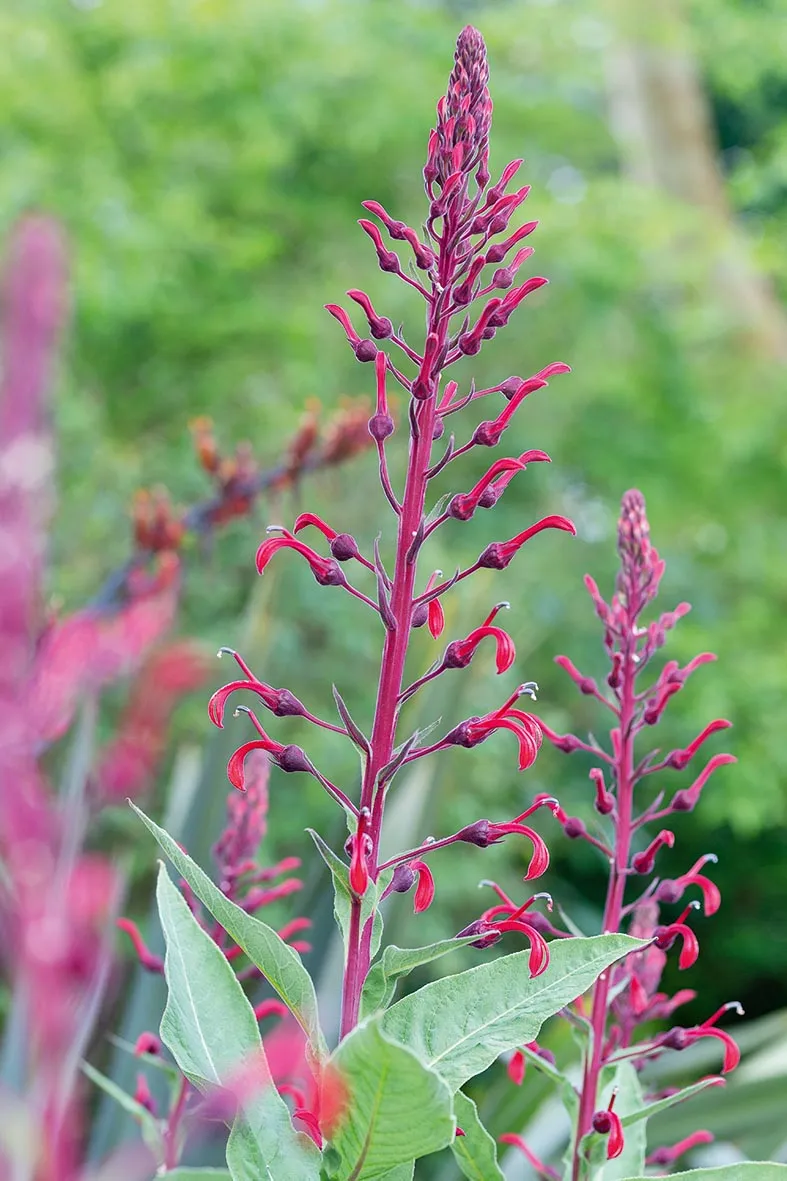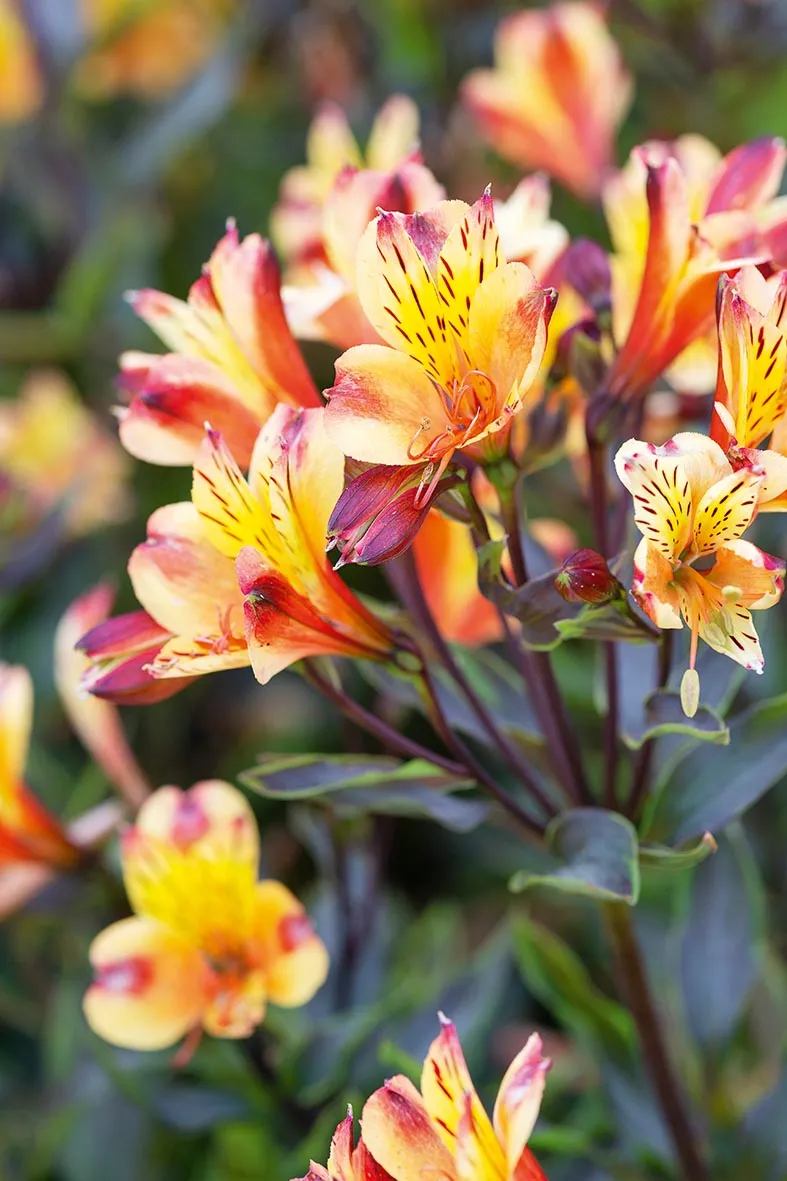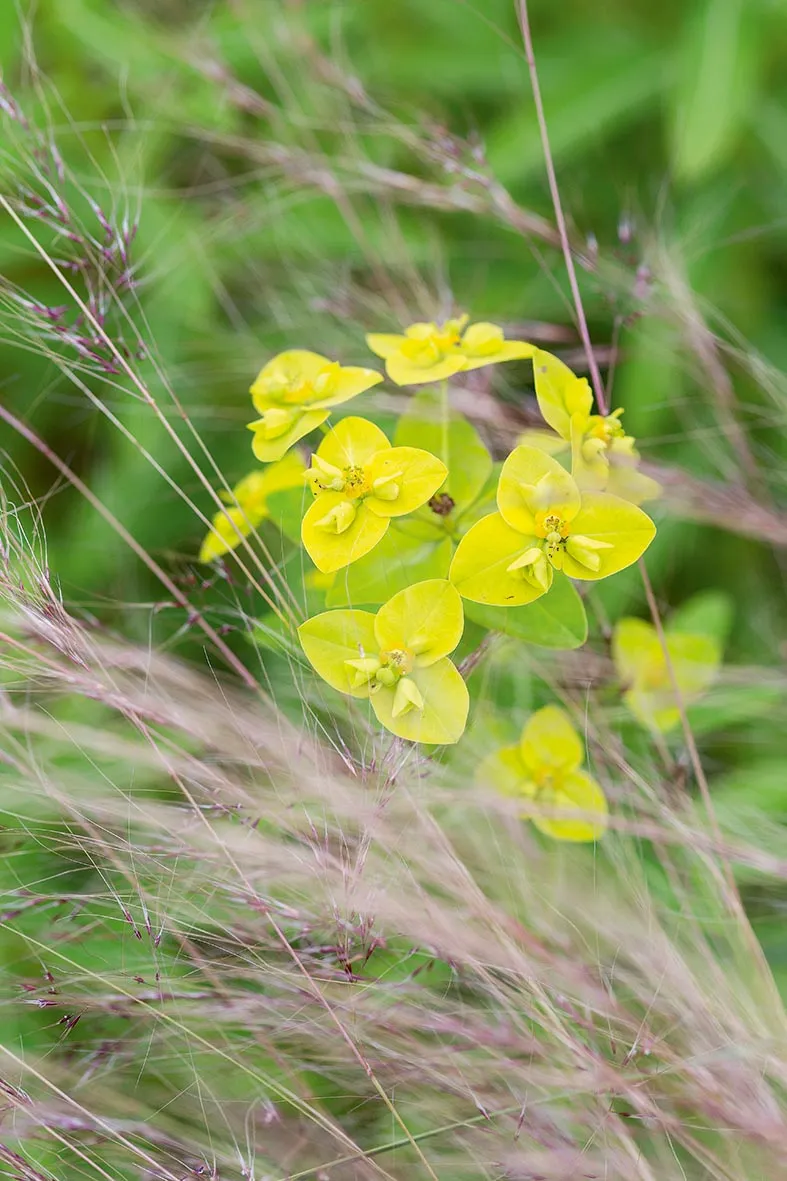The drive to Balker Farmhouse ascends through the shade of an intriguing woodland, the banks a colour-burst during spring when handsome rhododendrons flout their blooms. A woodland garden falls away towards a reflective stream, a burn that threads through the western reaches of the plot. Unfamiliar sylvan foliage from Chilean natives, such as Gevuina avellana and the ferny leaved Lomatia ferruginea, draw the eye into the shadows, a tease of the unusual and exciting plants to follow. The mild microclimate of Dumfries and Galloway, a tranquil low-lying coastal region in the southwest corner of Scotland, make this a most favourable location for horticulture.
The Stair Estate has a historic link with plant hunting and the creation of diverse planting schemes. At nearby Castle Kennedy Garden (the much-visited public garden of the Stair Estate) this is reflected in an outstanding collection of rhododendrons and champion trees. The coolness of the northerly latitude is tempered by the warming influence of the Gulf Stream and proximity to the sea. The soil here is lime-free, fertile and free draining with plentiful rainfall. Balker Farmhouse was the home of a strident plantswoman, the late Davina, Countess of Stair, who, in her advanced years made a private garden from scratch alongside the head gardener Annmaree Mitchell. The farmhouse was restored in 2002, and the garden, free from the strictures of a historic framework, retained a sense of order and formality close to the house. Read more about the garden below
Balker Farmhouse in brief
Name Balker Farmhouse. What Private garden on the Stair Estate. Where Dumfries and Galloway. Size Four acres. Soil Acidic gravelly, silty loam. Climate Maritime climate cool summers, mild winters and high rainfall. Hardiness zone USDA 9a.
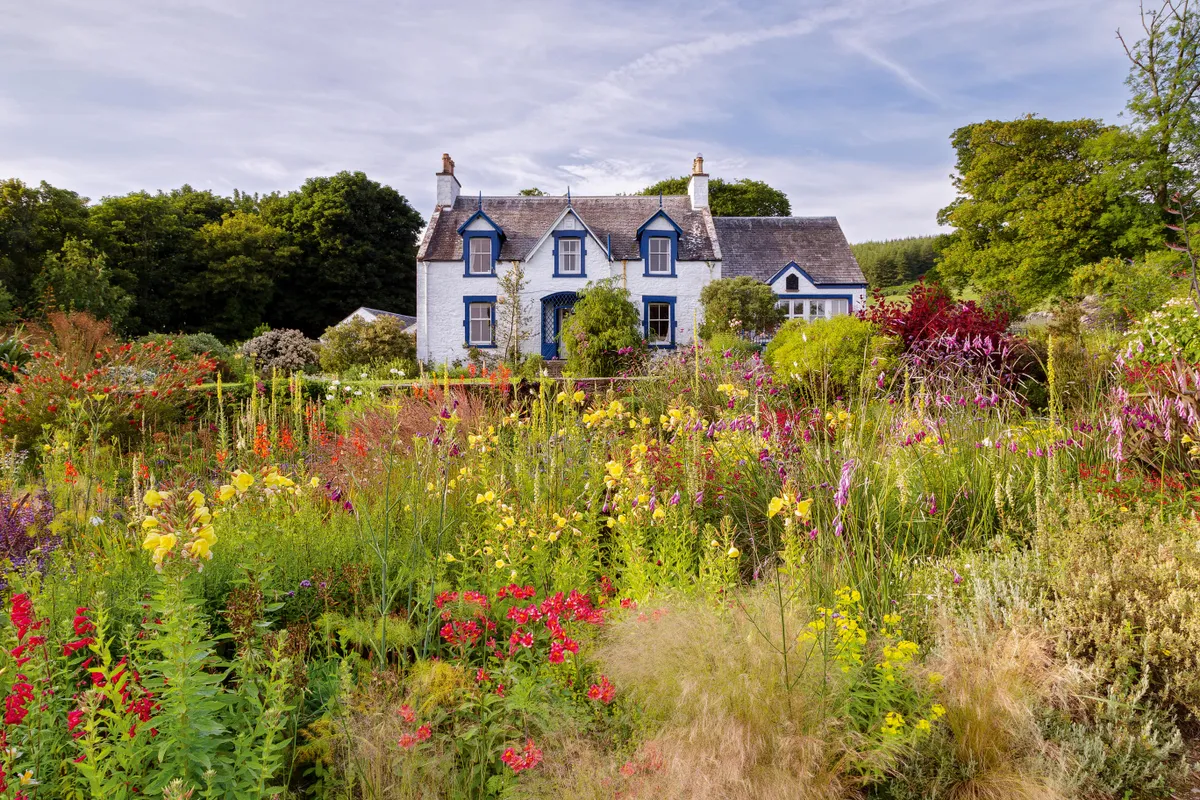
The whitewashed farmhouse and its extensive contemporary garden lie deep within the Stair Estate. This atmospheric and unusually informal garden was created by Davina, Countess of Stair and head gardener Annmaree Mitchell; its design driven by a love of colour and plant knowledge.
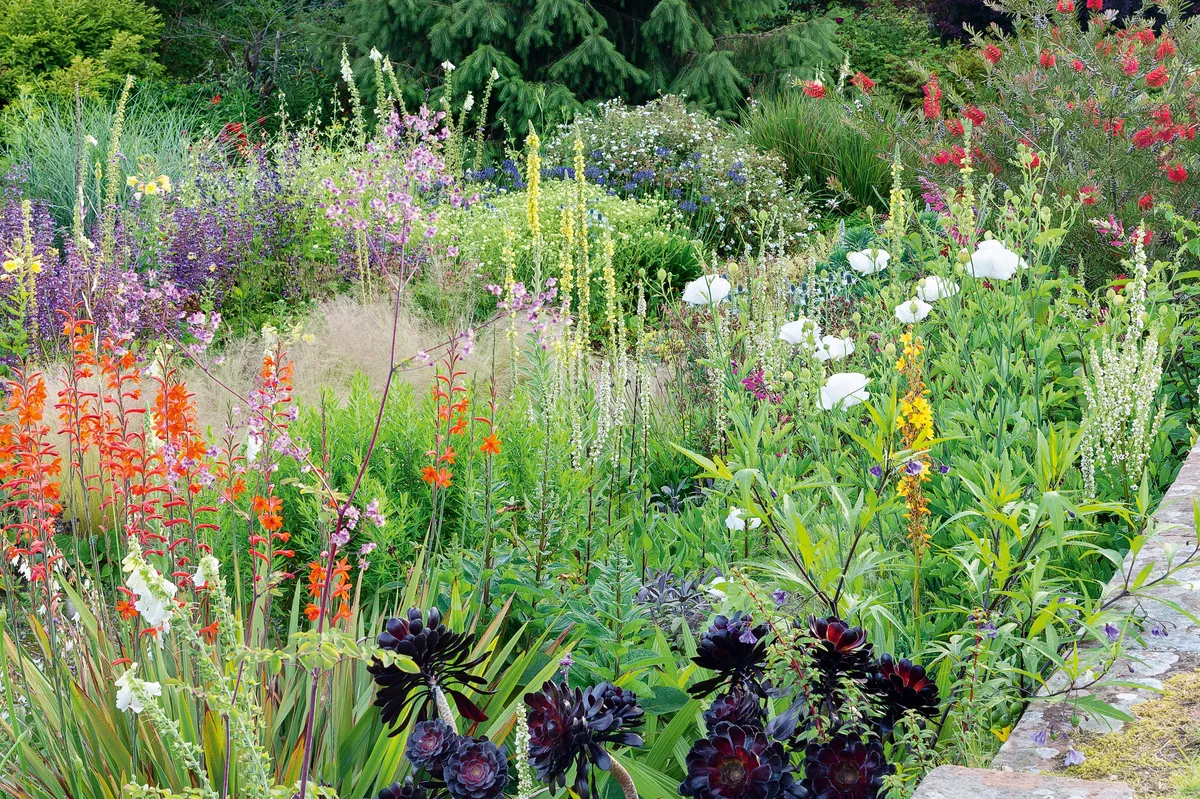
The view from the lawn overlooks a painterly sweep of planting. The considered selection of choice species and the best performing cultivars with the inclusion of softening grasses ensure that the rich colour palette is arresting rather than overbearing. The vertical accent of self-seeders and orange Watsonia pillansii is balanced by low mounds of species valued for their foliage. The almost-black Aeonium ‘Zwartkop’ and tender salvias are overwintered in a small greenhouse and plunged into the beds in early summer.
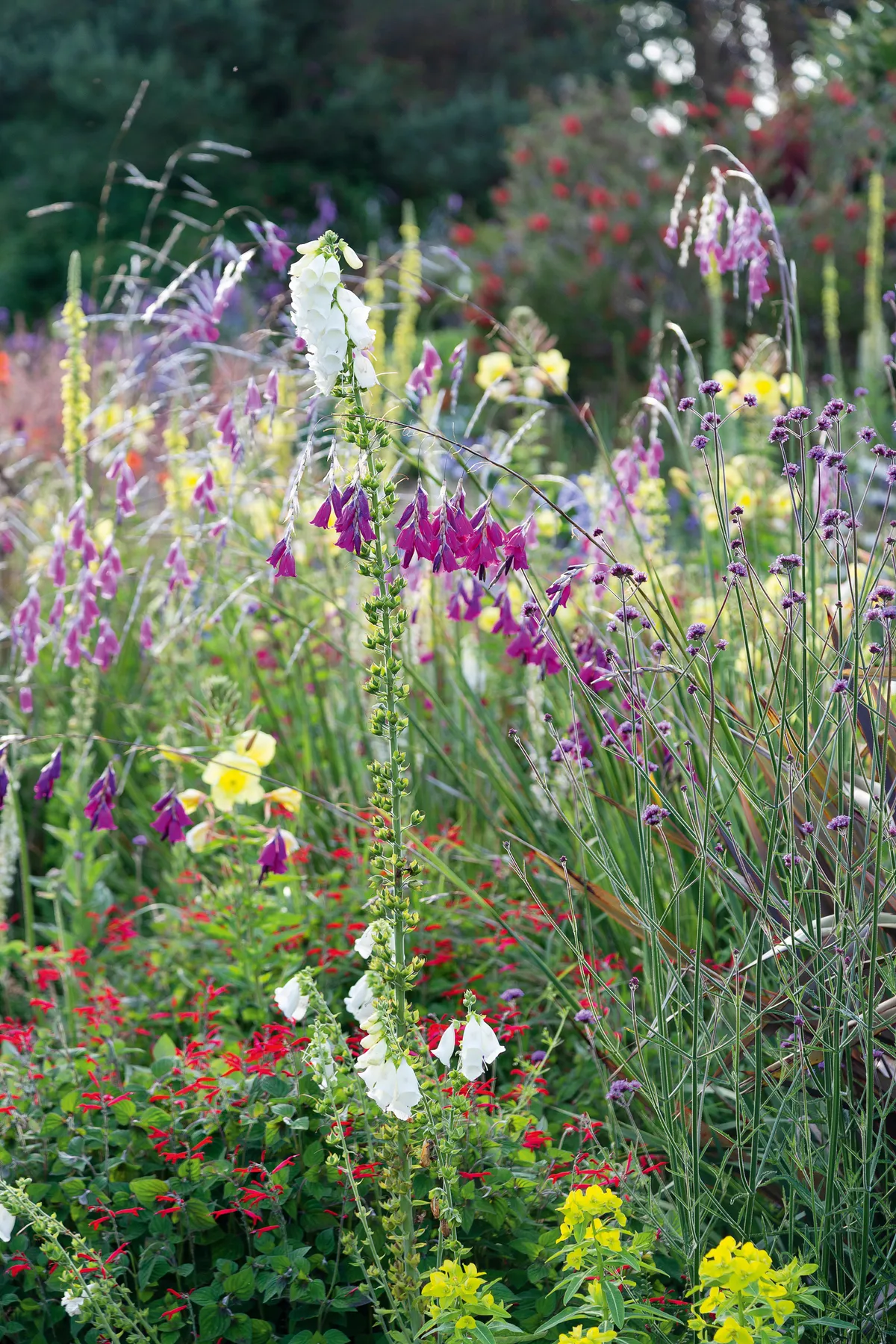
Self-seeders, including copious evening primrose, pale ivory verbascums, Verbena bonariensis and foxgloves in shades of white and cream, are a major component of how the plants successfully work together. All are welcome as long as there is no thuggish swamping or tonal clashes with neighbours.
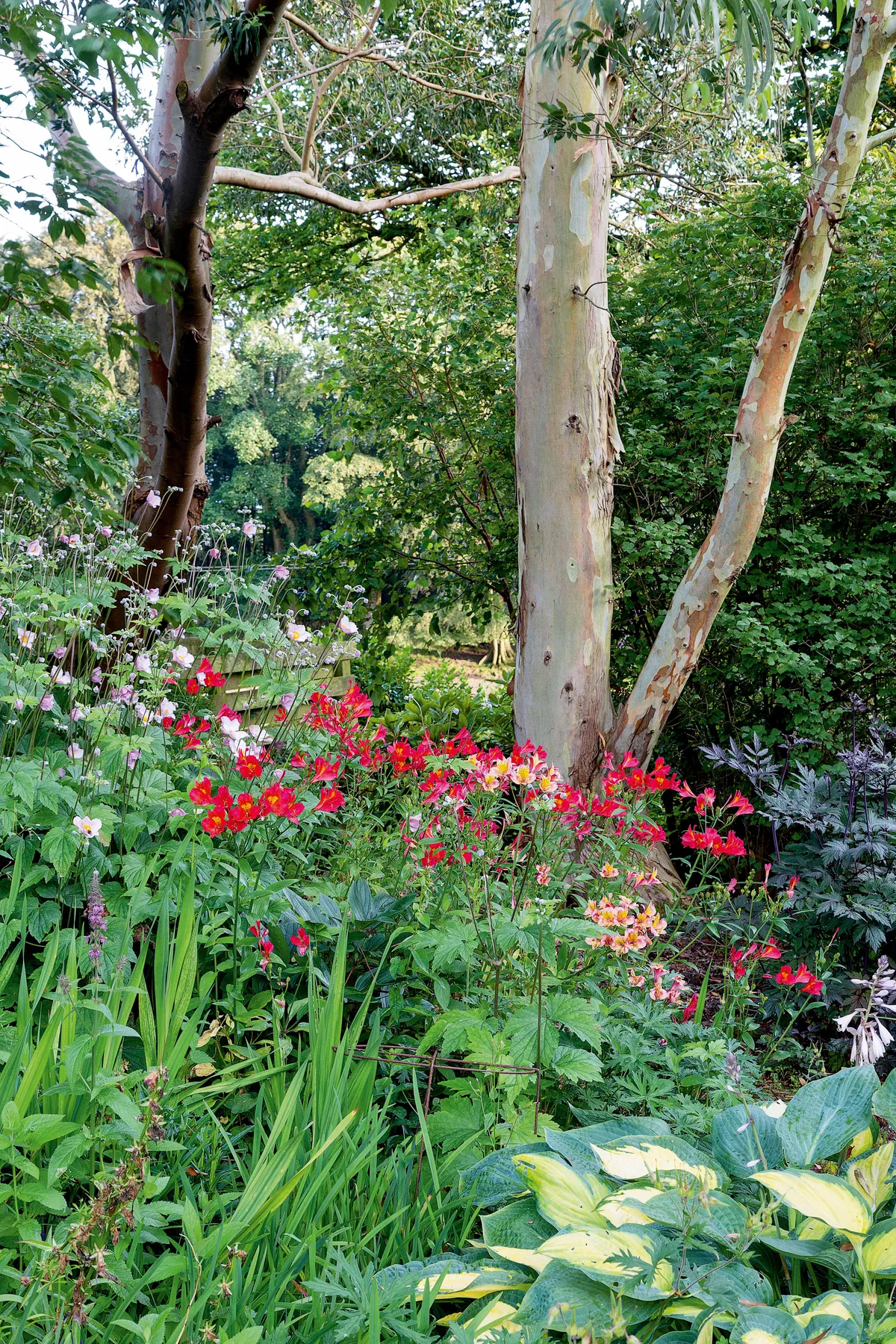
The mantra of right plant, right place is truly understood at Balker Farmhouse. The dark foliage of Actaea simplex Atropurpurea Group is easily scorched by excessive direct sunlight but quite happy here alongside Hosta ‘Orange Marmalade’ in the shade of an eucalyptus, its pastel flower spikes brightening the space in autumn alongside the pink flowers of Anemone hupehensis.
12 key plants at Balker Farmhouse
Watsonia pillansii
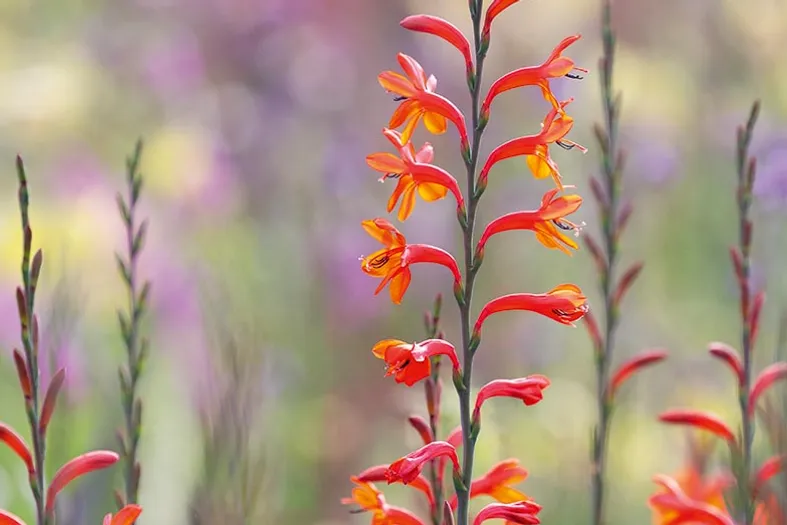
A clump-forming rhizomatous perennial from South Africa with sword-shaped leaves and intense orange flowers that are held in handsome spirals on strong, upright stems. Appreciative of full sun. 1m. RHS H3, USDA 9a-10b.
Verbascum chaixii ‘Album’

A promiscuous and very hardy self-seeding perennial with a basal rosette of architectural leaves and scarcely branched stems tightly massed with white flowers that have an intense purple eye. 75cm. RHS H6, USDA 5a-8b.
Penstemon ‘Andenken an Friedrich Hahn’
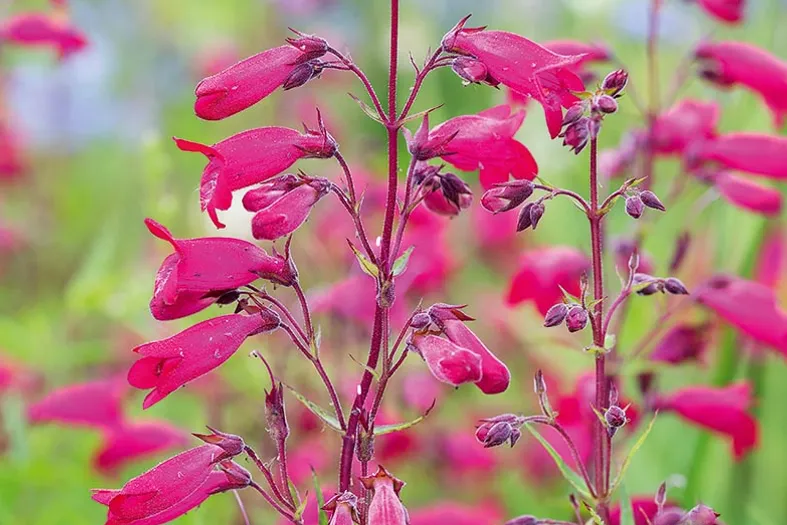
An elegant and floriferous long-lived perennial from North America with a mass of bold gem-red tubular flowers from July to October. Requires well-drained soil. 80cm. AGM. RHS H5, USDA 7a-9b.
Oenothera biennis
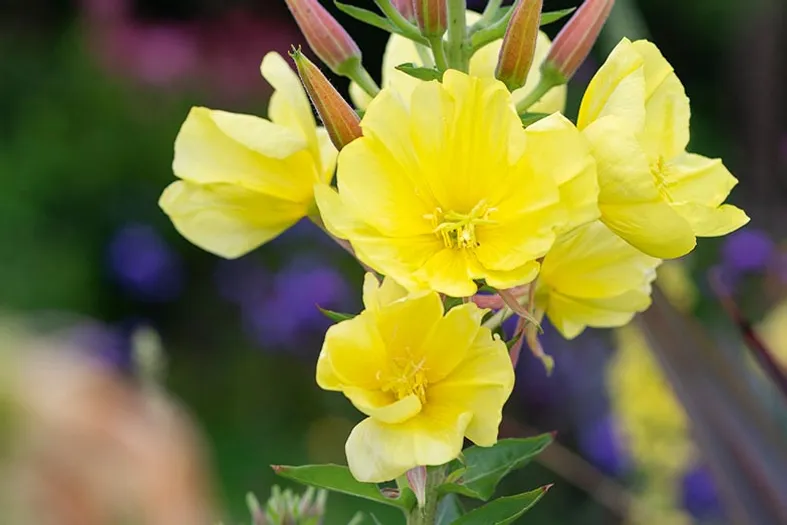
This common evening primrose is a tall and showy biennial that self seeds and is always welcome. Its wide saucers of fragrant, lemon-scented yellow flowers scent the evening air. The whole plant is edible. 1.5m. RHS H7, USDA 4a-9b.
Impatiens tinctoria
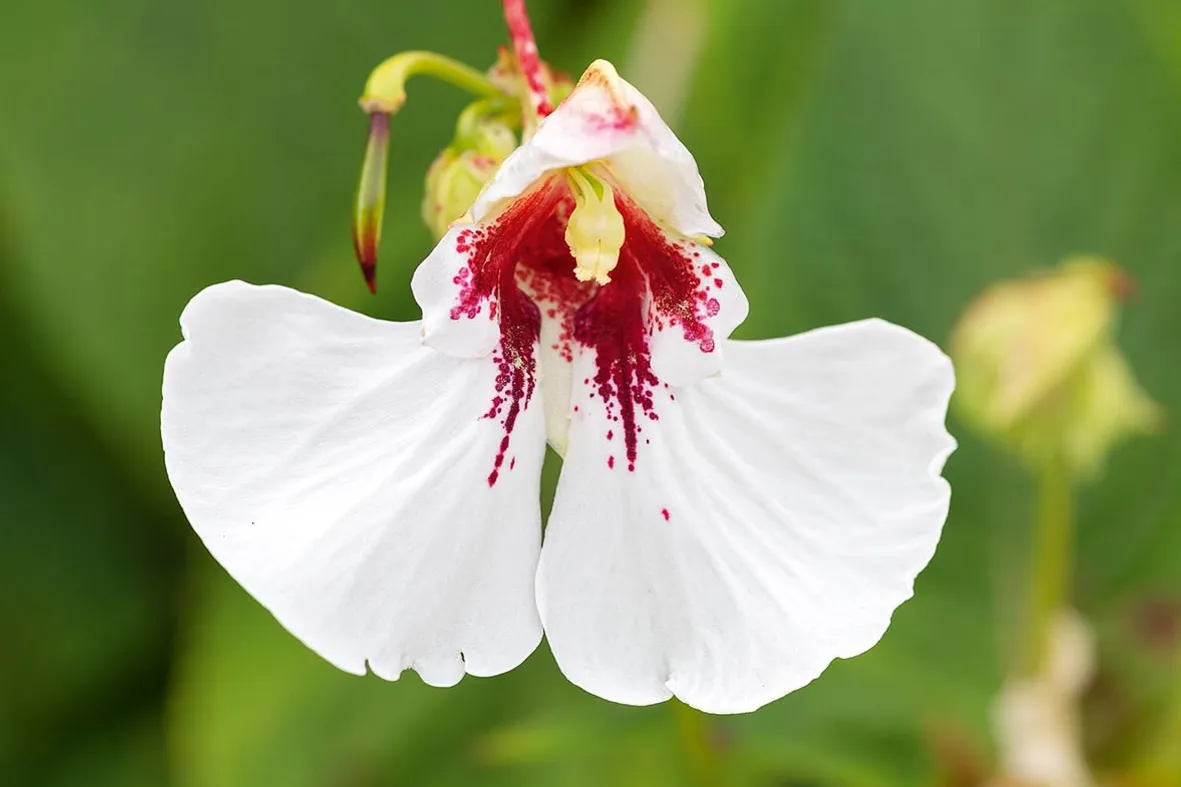
A vigorous hardy perennial from high-elevation, East African rainforests. Dramatic, orchid-like, white-and-crimson flowers and deeply veined large leaves. Requires part shade and a humus-rich soil. 2m. RHS H3, USDA 10a-11.
Polemonium yezoense var. hidakanum ‘Purple Rain’

A remarkably beautiful and unfussy Jacob’s ladder from Hokkaido in Japan with striking, dark foliage. The sprays of lilac flowers are attractive to pollinators, the show prolonged by deadheading. 45cm. RHS H7, USDA 4a-9b.
Kniphofia ’Sunningdale Yellow’
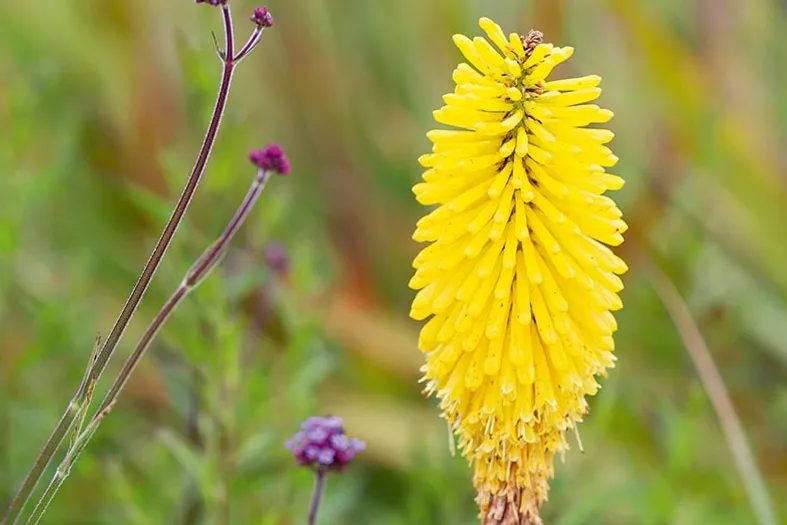
A clump forming but compact, perennial, red hot poker with dense, slender flowerheads of warm yellow. Does best in full sun and moist but well-drained soil. 90cm. AGM. RHS H5, USDA 4a-8b.
Lilium pumilum
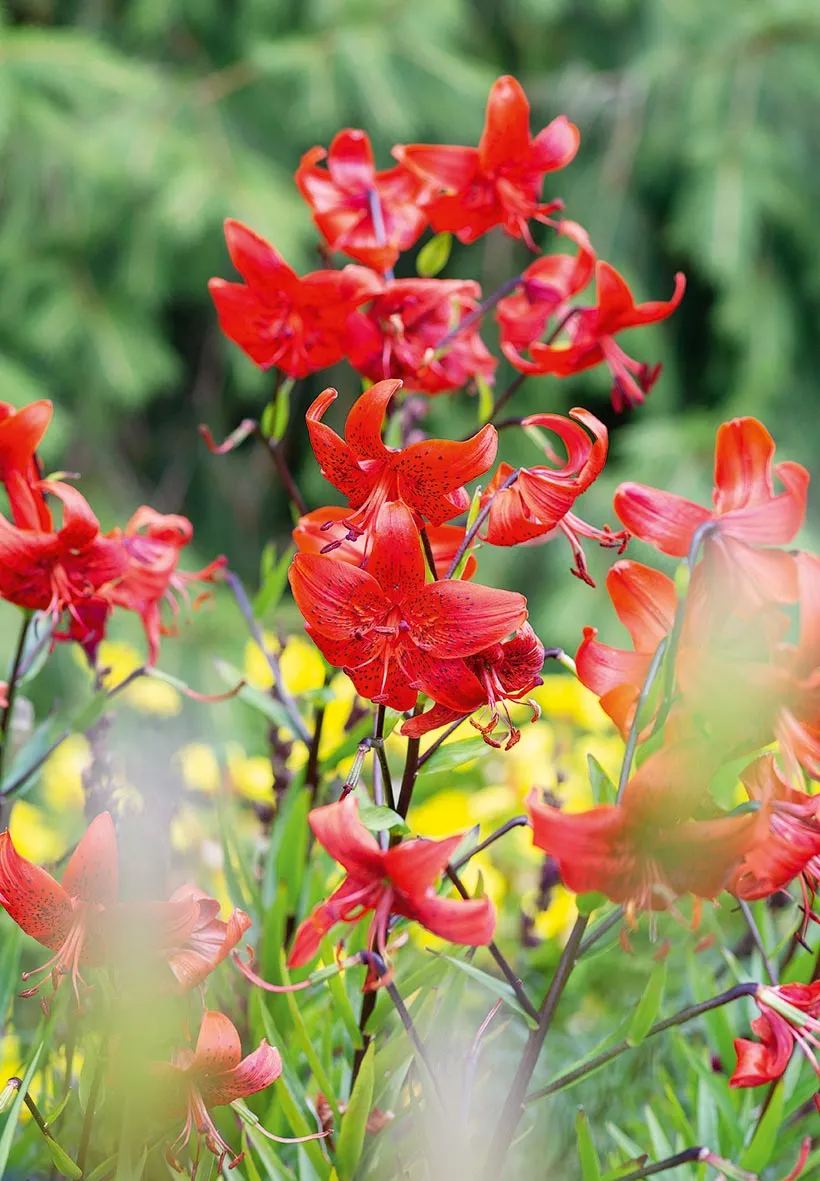
A graceful Asian lily with glossy, scarlet, recurved flowers that emit a heady fragrance. Bulbs persist for two to four years in well-drained soils but it flowers in only two years from seed so it’s worth saving some. 60cm. USDA 3a-7b.
Dierama pulcherrimum
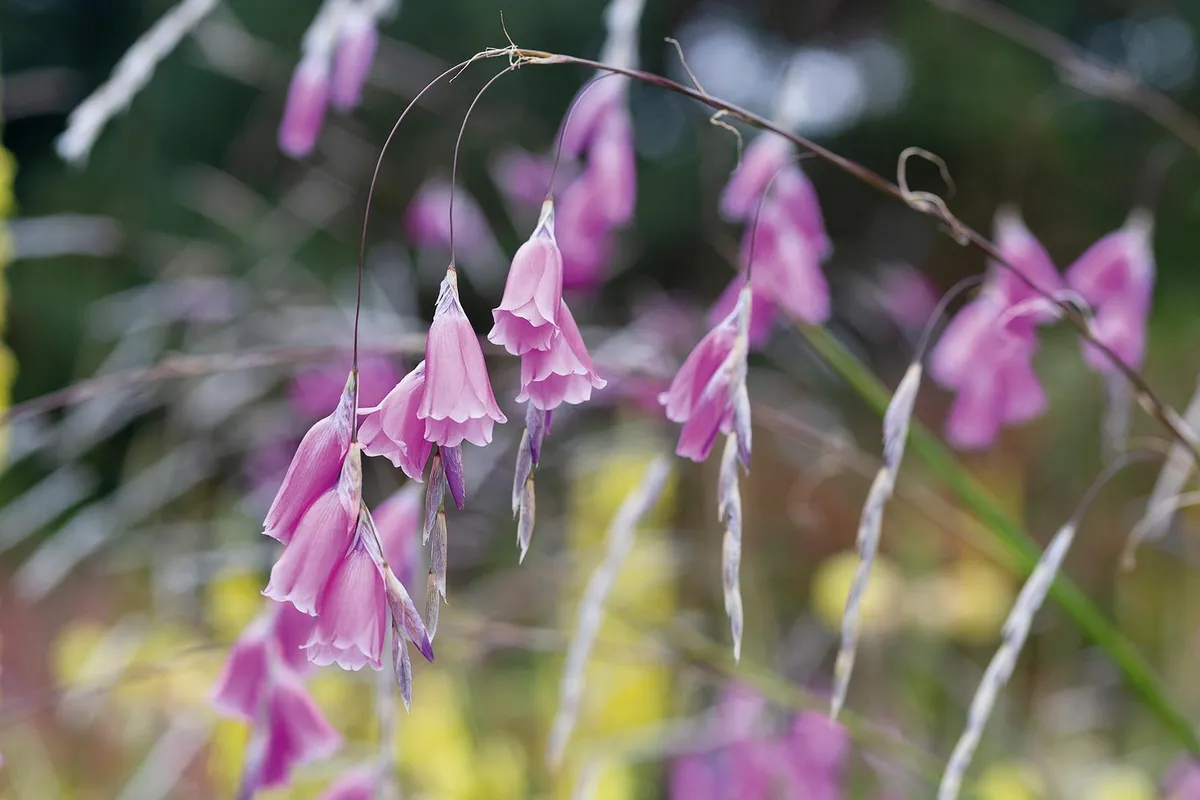
The elegant wiry arching stems of the angel’s fishing rod emerge in July, the tips weighed with a graceful drooped cluster of silver-pink, bell-like flowers. Needs an open, sunny position. 1.2m. RHS H4, USDA 7a-9b.
Lobelia tupa
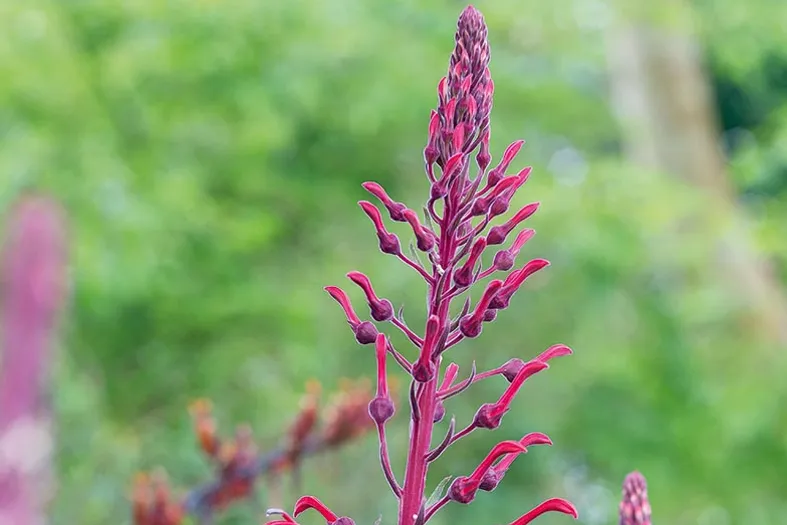
A magnificent Chilean perennial, known as devil’s tobacco, for sheltered gardens. Robust spires of curious, brick-red, tubular flowers are carried on tall dark stems above distinctive, grey-green foliage. Full sun and deep, moist soil. 1m. RHS H4, USDA 8a-10b.
Euphorbia wallichii

An upright bushy and long-flowering spurge that is native to the Himalayas. Offers vibrant, lime-yellow flowerheads from May to August, which together with its fresh foliage will brighten any border. Fully hardy, it needs full sun. 60cm. USDA 6a-9b.
Alstroemeria Indian Summer (= ‘Tesronto’)
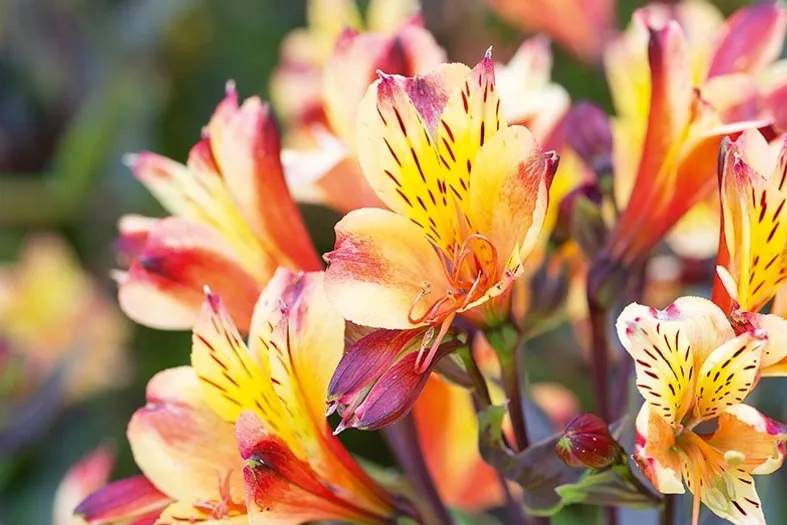
A mid-height perennial with exotic, fiery orange-red flowers and contrasting chocolate brown foliage. An excellent cut flower. Needs full sun to part shade. Mulch generously to overwinter until established. 60cm.
Address Balker Farmhouse, Stranraer, Dumfries and Galloway DG9 8RS. Tel 01581 400225/01776 702024. Web scotlandsgardens.org Open Occasionally through Scotland’s Gardens Scheme.

